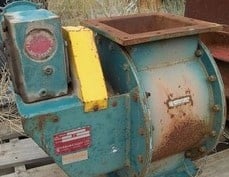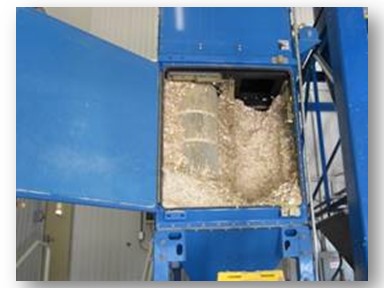Look under almost any dust collector and you will see a rotary airlock valve spinning its rotor and emptying the collected contents from the hopper. These valves have long been used to maintain a seal in vacuum dust collection systems while simultaneously providing an escape route for the dust. The advantages of a rotary airlock for dust collectors include, automatic hopper emptying, minimal vacuum pressure loss, and the many options available to meet specific application needs. Rotary valves can be custom fit to handle high temperatures, harsh chemical environments, and abrasive materials. Rotary valves do however, have a few major drawbacks.
Because rotary airlocks are sealed tight to the atmosphere they can be very difficult to clean. Cleaning a rotary valve often involves removing the drive assembly, end plate, and finally the rotor. This process can take hours to perform. Rotary valves are also expensive to operate. Typically, these valves are left running continuously, even when there is no dust present in the hopper. This not only wastes electricity but puts undo wear on the valve. Repair and replacement parts for rotary airlock valves can be quite costly as well. Even with these shortcomings, the rotary airlock remains the industry standard for most dust discharge applications.
One alternative which has been gaining popularity is a non-powered automatic dust discharge valve. These valves, like the Armadillo and Platypus Vacu-Valves from Aerodyne, rely on the negative pressure (max -18" W.C.) of a dust collector to hold a rubber sleeve closed to maintain an airlock. As the weight of the dust in the hopper builds up, the sleeve is forced open and dust is discharged from the valve. Leaf springs inserted into the valves sleeve also help to counterbalance the vacuum. A video demonstration of how this works is available here. The valves are available with a variety of sleeve materials for different applications. While these valves can not be used in every dust collection system they are a very economical alternative to expensive rotary valves.
The Vacu-Valves from Aerodyne are priced at a fraction of the cost of standard rotary airlock valves and require no electricity to operate. These valves have no controls and require no lubrication. They easily handle abrasive materials that would jam or wear out a rotary valve.
To learn more about which dust collector valve is right for you, please contact our experts at 440-543-7400 or click on the button below to get our infographic, Vacu-Valve is a Simpler Solution.



